Addiction is a complex condition that affects millions of people, impacting every aspect of their lives—from personal relationships to physical and mental well-being.
While the struggles of addiction may look different for everyone, there are specific addictive behavior patterns that often define it, known as the 4 C’s of Addiction. These four key traits—Craving, Control, Compulsion, and Consequences—are central signs of addiction and help explain how addiction develops and why it can be so difficult to overcome.
By understanding addiction symptoms through the 4 C’s, you can better recognize the characteristics of addiction in yourself or others, which is crucial to step in early and seeking treatment. Could you or someone you care about be displaying these signs? Read on to learn more about the 4 C’s and how they can help in identifying addiction.
What Are the 4 C’s of Addiction?
The 4 C’s of Addiction refer to four core behaviors that are commonly observed in individuals struggling with addiction: Craving, Control, Compulsion, and Consequences. These behaviors form the foundation for recognizing characteristics of addiction and understanding how addiction manifests as a persistent problem.
- Craving represents the intense desire or urge to use a substance or engage in addictive behaviors.
- Control refers to the loss of ability to limit substance use or stop the behavior, even when a person tries to quit.
- Compulsion is the overwhelming need to keep using, often without conscious choice, driven by internal urges.
- Consequences point to the negative outcomes that occur as a result of continued use, yet the individual persists in the behavior despite being aware of these harmful effects.
These four elements provide a clear framework for recognizing the signs of addiction and help explain why breaking free from addictive behaviors can be so challenging. Understanding the 4 C’s is crucial for identifying addiction symptoms and can guide individuals toward seeking the help they need. In the next sections, we’ll explore each of these behaviors in detail.
Craving – The Intense Desire for the Substance
Craving is one of the most powerful signs of addiction. It refers to the intense, often overwhelming desire to use a substance or engage in an addictive behavior. These cravings can feel all-consuming, as if the substance or activity is the only thing that will bring relief or satisfaction. For someone experiencing cravings, the urge to use can be so strong that it overshadows all other thoughts and priorities.
Cravings can persist even after long periods of abstinence, making recovery particularly challenging. They are often triggered by environmental cues—such as places, people, or situations associated with past use—or by emotional states like stress, anxiety, or even boredom. For instance, a person addicted to alcohol might walk past a bar and suddenly feel a powerful need to drink, even if they haven’t consumed alcohol in months. Similarly, feelings of loneliness or sadness might reignite the urge to seek comfort in substance use.
Cravings are relentless and can feel like an obsessive thought that you can’t escape. Imagine someone who’s addicted to alcohol constantly thinking about their next drink, even when they have made a conscious decision to stop. The intensity of these thoughts can drive a person back to their addictive behavior despite their best intentions. Understanding this characteristic of addiction is key to recognizing the need for ongoing support and strategies to manage cravings during recovery.
Control – The Loss of Ability to Regulate Use
Another major characteristic of addiction is the loss of control over substance use. Individuals struggling with addiction often find that, despite their best efforts, they are unable to regulate how much or how often they use the substance. This loss of control means that even when a person sets boundaries for themselves, such as limiting use to certain times or occasions, they consistently exceed those limits.
This inability to control use is frustrating and demoralizing for those battling addiction. They may start with the intention of using only a little or stopping after a set amount of time, but find themselves using more than they planned. This pattern of broken promises to oneself can lead to guilt and shame, further fueling the addictive behavior.
For example, someone addicted to alcohol might tell themselves they will “only drink on weekends” or “stick to just one or two drinks,” but they find themselves drinking more frequently and in larger amounts than they intended. Over time, this cycle of failed attempts to control use reinforces the addiction, making it harder to break free.
Recognizing the loss of control is a key step in understanding addiction symptoms. It highlights that addiction is not just a matter of willpower—it’s a complex condition that often requires professional help and support to manage.
Compulsion – The Urge to Engage in the Behavior
Compulsion is a key characteristic of addiction, where individuals feel an overwhelming urge to engage in the addictive behavior, often without the ability to resist. This compulsion drives people to use substances or engage in activities repeatedly, even when they are aware of the negative consequences. It’s as though the brain becomes hardwired to prioritize satisfying the addiction over everything else.
The compulsive nature of addiction makes it difficult for individuals to focus on anything other than satisfying their cravings. Whether it’s drugs, alcohol, gambling, or another addictive behavior, this urge becomes all-consuming, pushing everything else—work, relationships, health—into the background. The person may be fully aware of the harm they are causing, but the need to engage in the addictive behavior feels uncontrollable.
For example, someone addicted to gambling might feel a constant, uncontrollable urge to place bets, even when it’s leading to financial ruin. Despite knowing that their actions could have serious consequences, such as losing their savings or damaging relationships, the compulsion to gamble can feel impossible to resist. This relentless drive is a key reason why addiction is so difficult to overcome without help, as the individual’s brain and behavior are locked into a cycle that’s hard to break.
Understanding compulsion is essential to grasping the full impact of addiction. It goes beyond choice or desire—it becomes a force that takes control, making professional intervention and structured support crucial for recovery.
Consequences – Continued Use Despite Negative Outcomes
One of the most telling signs of addiction is the continued use of a substance or engagement in a behavior despite the obvious negative consequences. Whether the harm is physical, emotional, social, or financial, individuals with addiction often find themselves unable to stop, even when they recognize the damage they’re causing. This is a hallmark of addiction—the inability to break free, even when the costs become painfully clear.
People struggling with addiction may face a wide range of consequences, from deteriorating health and strained relationships to job loss and financial hardship. Despite knowing that their actions are harmful, they continue to use the substance or engage in the addictive behavior. This disconnect between awareness of harm and the inability to stop is driven by the overpowering forces of craving and compulsion, which often cloud judgment and make it difficult to prioritize long-term well-being over immediate gratification.
For example, even when someone recognizes that their addiction is damaging relationships or costing them their job, they continue using because the compulsion and craving overpower their judgment. They may deeply regret their actions, but the addictive cycle persists, making it difficult to regain control without external support.
Understanding this characteristic of addiction highlights the importance of compassion and treatment. Addiction is not simply a matter of choice—it’s a condition that requires professional help to overcome, especially when negative consequences no longer serve as a deterrent to continued use.
Seeking Help: Treatment Options for Addiction
Once addiction is recognized, seeking professional treatment is crucial to breaking the cycle and starting the recovery process. Addiction can be difficult to overcome on your own, as the 4 C’s—Craving, Control, Compulsion, and Consequences—often create a powerful grip that requires structured support and guidance.
There are several types of treatment available, each tailored to meet the unique needs of individuals struggling with addiction:
- Detox: The first step in many recovery programs, detox helps the body safely rid itself of substances under medical supervision, providing a foundation for further treatment.
- Rehabilitation Programs (Rehab): Inpatient or outpatient rehab programs offer a combination of therapy, counseling, and medical care to address the psychological and physical aspects of addiction.
- Therapy and Counseling: Both individual and group therapy are important components of recovery, helping individuals understand the root causes of their addiction and providing tools to manage cravings and triggers.
If you or a loved one are struggling with addiction, professional help is just a step away. DetoxLA offers premier and comprehensive addiction recovery services, from detox to residential treatment, in a supportive and compassionate environment. Don’t wait—contact DetoxLA today to learn more about how we can help you reclaim your life and start your journey to recovery.
What are the 4 C’s of addiction?
The 4 C’s of addiction are Craving, Control, Compulsion, and Consequences. These key behaviors help identify addiction by highlighting the intense desire to use, loss of control, compulsive behavior, and continued use despite negative outcomes.
How can the 4 C’s help in recognizing addiction?
Recognizing the 4 C’s allows individuals to identify addictive behaviors early, making it easier to seek intervention before addiction worsens.
What treatment options are available for addiction?
Treatment options include detox, rehabilitation programs (inpatient or outpatient), and therapy to address both the physical and psychological aspects of addiction.

